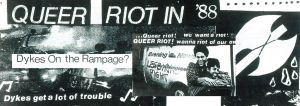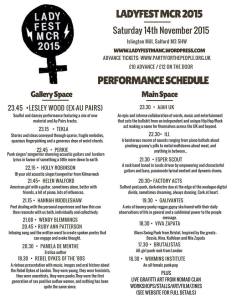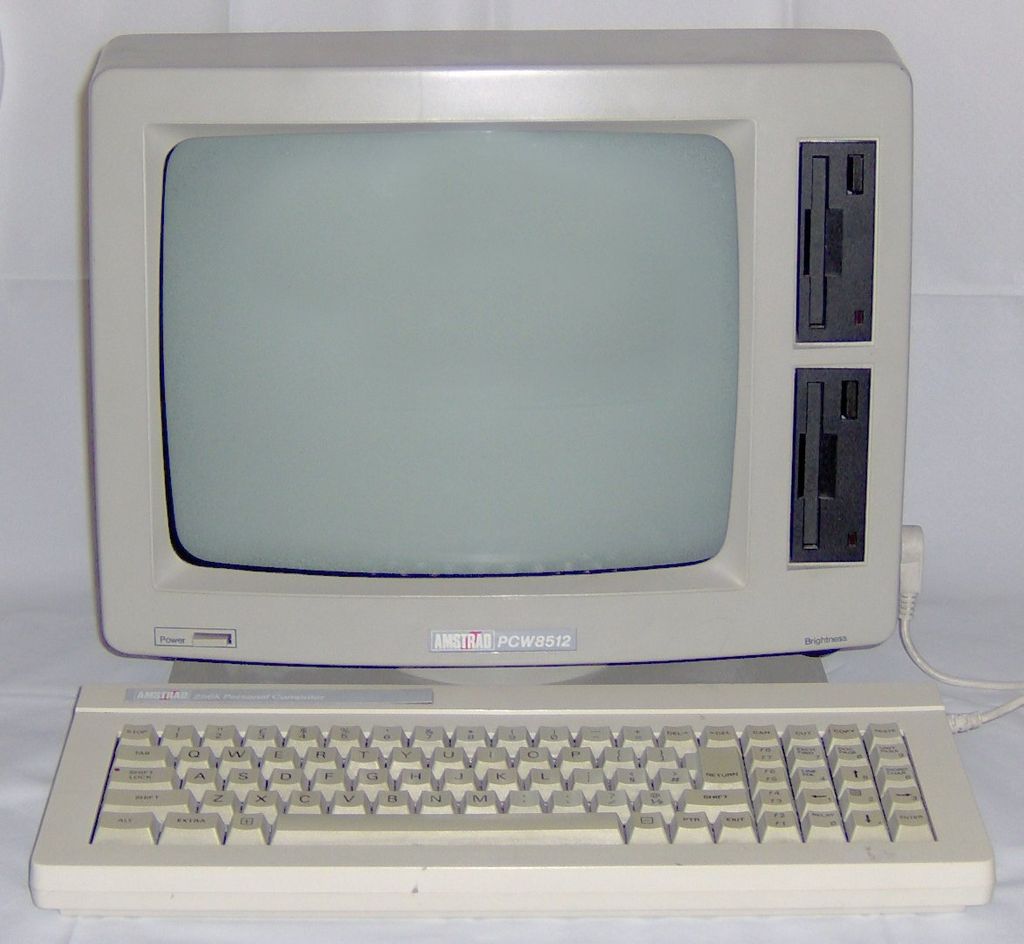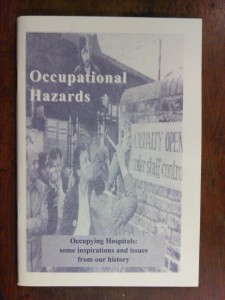
For several years I’ve been posting about Rebel Dykes of the 1980s and my own history in that scene. I’ve also written about the Sluts From Outer Space, our band that started with a ‘Queer Riot’ singalong when making our way home from some proverbial ‘scuffles’ at a Clause 28 demo. You can read more about such matters in Rebel Dykes of the 1980s and the Sluts From Outer Space and Manchester, myth and music.
Rebel Dykes the film is now out in the world! It’s been turning up at various festivals around the world – online and increasingly in real life – and it will be on general release later in the year. It started as an oral history project initiated by Siobhan Fahey. Then it snowballed into a feature film, with Siobhan Fahey as creative producer and directed by Harri Shanahan and Siân A Williams. It also developed into an archive and gave rise to performance art.
And now we have an art show, produced by Siobhan Fahey and curated by Atalanta Kernick and Kat Hudson, which is dedicated to documenting rebel dyke lives and times. It emphatically does not go for nostalgia but aims to uncover a hidden history and forge intergenerational links.
The exhibition is based at Space Station Sixty-Five, Kennington, London from 25 June to 17 September 2021. Admission is free and booking isn’t necessary, though you might need to wait if it’s very busy. Check out Rebel Dykes Art and Archive Show and Space Station Sixty Five for more information.
I attended the art show recently, along with two friends who used to knock about the same haunts. As usual I’ve taken a while to get down to blogging about this show, having fallen behind on my own work amid a flurry of freelance editing. I’m only just beginning to grasp how to do the editing work and my own writing at the same time. Home-based work tends to spread and spread and suck up the rest of my time. However, there’s something to be said for being able to go to work in my jammies.
I’ve in fact visited the exhibition twice; at my first excursion I just gaped at the wonders before me. I was impressed with the variety of media involved: photos, videos, textile work, videos, paintings and drawings. The best thing is to get over to Kennington and see it for yourselves.
I’ve included just a sampling of the artwork in this post. To start with, here’s a collection of photographs taken at a party in a squat at Solon Road, London SW2 around 1986. You might recognise me: I’m very pink in one and I display a dashing ‘tache in another.

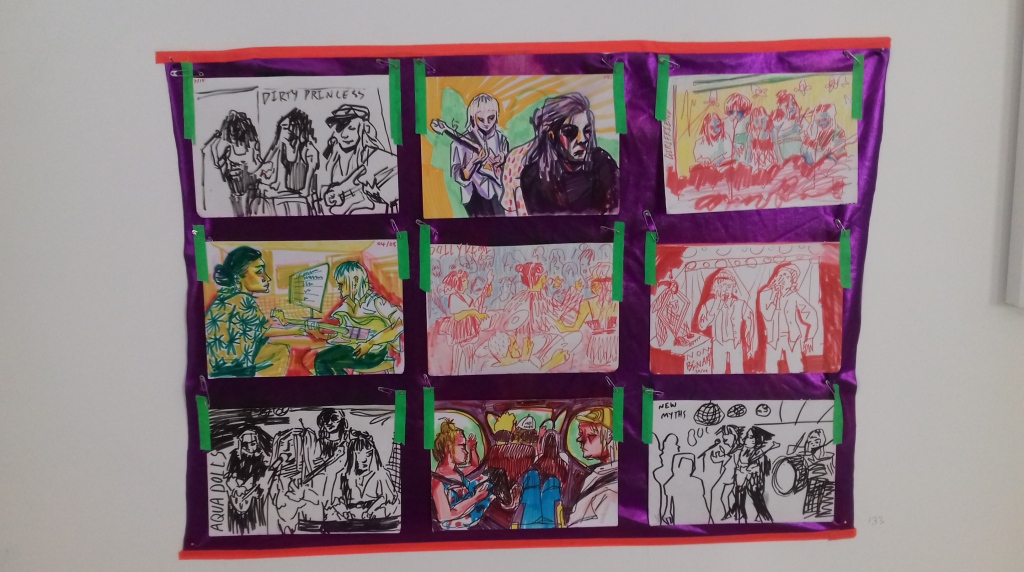
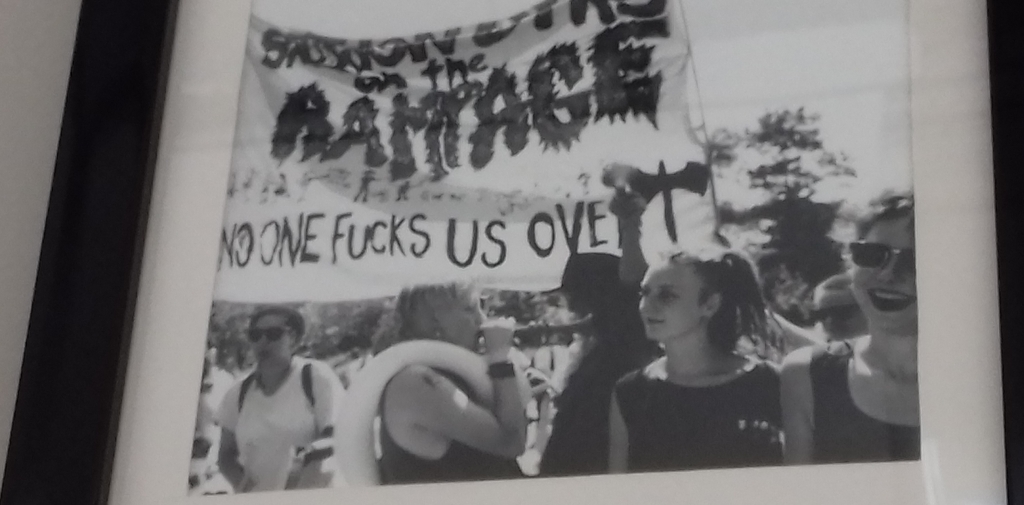

The show also features film footage that didn’t quite make it into the final cut – under the title of Dyke Tales – including a part of my interview. I think I was explaining some of the haunts and sartorial tendencies of rebellious dykes who weren’t really part of the Chain Reactions scene, which is a focal part of the film. I might’ve talked about the South London Women’s Hospital at some point, but my memory of the actual interview is vague. This was in 2016 and a lot has gone down since then. But in any case, during my interview I managed to maintain the facial expression of someone who can’t stop smiling at an oncoming bus as its about to hit them – so I suspect that some of my bits really were best left on the cutting room floor.
However, one additional segment I particularly enjoyed was an interview with Paula and Suzanne from the Gymslips, an all women punk band from the 1980s. It may be hard to believe but women-only punk bands were still unusual – after that famous first wave we had to look high and low for female punk bands. During the interview Paula and Suzanne talk about record companies and pressures on women in bands, which might offer some insight as to why. I saw the Gymslips several times and the Sluts From Outer Space played our first gig with them (in their later incarnation as the Renees). It was, in fact, a benefit for our ‘zine Feminaxe and here’s a flyer for it on the right. Below is a shot from the video.

And we’ll wind up with a song by the gals themselves from 1982.
“See us walking down the street, monkey boots upon our feet, in our ragtag levi jeans… We’re the Renees here we come, One two three and up yer bum!”
On that note, I’ll say goodbye… and hopefully I’ll be back sooner than later. Meanwhile, here’s a gorgeous flyer for the latest appearance of Rebel Dykes on the film festival circuit – in LA.





